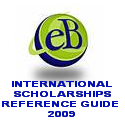COURSE WEEK
PROJECT WEEK
FINANCIAL ENGINEERING THE MATHEMATICS OF RISK MANAGEMENT
4 - 15 August 2008 Bandung
Organised jointly by
Laboratorium Matematika Indonesia (LabMath-Indonesia)
and
Universitas Katolik Parahyangan
in collaboration with
. Delft University of Technology, the Netherlands . University of Twente, the Netherlands
AIM AND DESCRIPTION
The aim of the two-week Research Work Shop (RWS) is to provide some background of methods and ideas in Financial Engineering. For the best performing participants, this may be the start of continued research, guided by one of the lecturers of the RWS.
This course aims to provide a thorough mathematical introduction to the modeling of financial derivatives. We start with dynamic models in discrete time for asset prices and derive the mathematical conditions that have to be used in such models to make them realistic representations of markets. Using binomial models, and the powerful concept of markets that are arbitrage-free, i.e. markets in which it is impossible to make riskless profits, we will be able to prove important results concerning the structure of such markets.
We then look at models in continuous time, and we will quickly realize that a realistic model for stock prices should lead to paths which are almost everywhere continuous but almost nowhere differentiable. The analysis of processes with this property is made possible through the use of Ito Calculus, which will be introduced in the course. It turns out that the structural properties that can be derived for the discrete time models mentioned earlier generalize to an astonishing extent in continuous time. This results in the powerful theory of risk neutral pricing, which is the cornerstone of modern mathematical finance.
To be able to use all these concepts, the last part of the course will also discuss in detail how option pricing models can be implemented in practice. The main aim of option pricing models is not to make riskless profits, or use advanced statistical techniques to profit from speculation. The aim of option markets is to provide a service which allows other parties to reduce their financial risk, in a way that is comparable to taking out insurance against possible misfortune. Option pricing theory therefore deals with more than establishing consistent pricing models. It is also essential to derive trading strategies which minimize the risk for the option trader. This leads to deep questions concerning the existence and uniqueness of certain stochastic integral representations for random variables, and financial engineering applications have thus lead to a lot of new mathematical research into such questions.
For some models there are explicit solutions which can be implemented using techniques varying from partial differential equations (such as the Black-Scholes equation) to Monte Carlo simulations under transformed probability measures. Efficient numerical implementation of these methods, and formal proofs of their convergence, form an essential part of mathematical finance and will therefore be discussed on an introductory level in this course too.
Mathematics is often extra exciting when quantitative problems in the real world require not only application of existing mathematical techniques, but the extension of these techniques due to new conditions or model assumptions which are essential for a realistic model. In this course we hope to show you how fruitful the interplay between the theory of stochastic processes and the practice of option trading has been, and to make you enthusiastic for one of the most successful applications of probability theory and functional analysis in modern times.
Please consult the webpage www.math.utwente. nl/~vellekoopmh/ FEcursusLabmath/ for additional information and preparatory material.
PROJECTS
Project 1 : PRICING AND HEDGING OF ASIAN OPTIONS.
We consider the pricing and hedging problem for an 'Asian option', an option with a payoff that depends on the average of certain asset price values, instead of a fixed end value. The numerical computations for this kind of options are known to be challenging, but many different and interesting ways to attack the problem have been proposed in the literature. We will focus in particularly on the question what the speed of convergence of these different methods will be.
Project 2 : INDONESIAN OPTIONS.
In September 2006, the Jakarta Stock Exchange (JSX) introduced the trading of options on stocks of five companies: Telekomunikasi Indonesia Tbk (TLKM), Astra International Tbk (ASII), HM Sampoerna Tbk (HMSP), Bank Central Asia Tbk (BBCA) and Indofood Sukses Makmur Tbk (INDF). The regulations for trading in these options contain, among others, descriptions of put and call option contracts with the stock of one of the above-mentioned companies as underlying. Since these contracts are rather special, we will refer to them as Indonesian put or call option. In this project we try to find the precise regulations for Indonesian options from information that is officially published by the Jakarta Stock Exchange and use this to try to price and hedge such options.
Project 3 : ATM FORWARD PERCENTAGE CALL SPREADS.
The ATM Forward Percentage Call Spread is a special type of call option contract in which there is only a pay-off if the price of the underlying asset at a future maturity time is higher than the price at the initial time. In this case the pay-off is 1 euro for every percent of increase of price between those times up to a certain maximum. As such, an ATM Forward Percentage Call Spread is more like a trading strategy. They are not traded on the market, but they are an example of a so-called structured product. In this project we will calculate a price and a replication strategy for an ATM Forward Percentage Call Spread. Using historical and boot-strapped data, we try to get some insight into the risk of the replication strategy.
Project 4 : BASKET OPTIONS.
Basket options are options whose payoff depends on the value of a basket, i.e. a portfolio of assets. We will consider baskets of futures or forward contracts on different (but related) commodities that mature at the same time. Such basket options are very common in commodity markets. We assume that under the risk neutral measure the prices of the futures follow correlated Geometric Brownian Motions. In recent work, the probability distribution of the price of the basket was approximated by a generalized family of lognormal distributions. We start this project with a study of futures traded at Indonesian markets, and continue with a study of the distribution of sums of correlated lognormal distributions to test the approximation that have been proposed.
PROGRAMME LAY-OUT
The first week is a Course week, with lectures and exercise classes. This Course week can be attended by maximal 30 participants. At the end of this week, the projects will be introduced and Project groups will be formed. At most 20 participants can continue with these projects, when necessary selected based on their performance during the Course week. This project work will be executed during the whole second week with close guidance by the RWS lecturers. Participants will prepare written and oral presentations of their work. Arrangements for further activities will be made if applicable.
AWARD/CONTINUATION
For at most five of the best performing participants, a continued activity will be designed. Such a continuation may consist of further study and own research investigations in a specific topic. Working on the topic may include a period of several months as guest of LabMath-Indonesia in Bandung. During these periods, and as much as possible also during other periods using email for correspondence, tutorial guidance will be provided by one of the lecturers of the RWS. When achievements are good, sooner or later the results will lead to an application for a research grant, to an international publication, and/or to a visit or following a study programme at a university abroad, whatever is possible and desired. The best performing participants will be invited and guided to write a research proposal to be submitted to (inter-) national funding agencies.
LECTURERS
Dr. Ferry Jaya Permana, Universitas Katolik Parahyangan, Indonesia Dr. Hans van der Weide, University of Delft, the Netherlands Dr. Michel Vellekoop, University of Twente, the Netherlands
PARTICIPATION
Students and staff from governmental or private universities and organisations, and employees of companies and Banks can apply for participation. Especially young S1 students in their final year and S2 students are strongly encouraged to participate. To profit from the course, participants should be eager to learn new topics, both the theoretical background as well as the specific applications. In general, basic knowledge concerning probability theory is required. Students with a math, physics, engineering or econometric background will be able to enjoy the lectures and projects. Programming skills (Matlab, Maple), will be needed in the execution of some projects. The applications will be thoroughly examined, and at most 30 participants will be allowed to participate in the first Course Week and 20 participants in the Project week.
DEADLINE FOR APPLICATION: 20 July 2008.
NOTIFICATION OF PARTICIPATION: 27 July 2008.
Participants who register earlier than the above mentioned deadline will receive sooner notification of participation.
FEE AND SUPPORT
For participation a fee is requested of Rp. 1.000.000 for registration before 20 July 2007, and Rp. 1.500.000 thereafter. This fee includes the workshop material, lunch and coffee/tea during breaks, and the workshop dinner. Support is given to reduce the fee for young students to Rp. 100.000 and for university staff members to Rp. 500.000.
VENUE
Computer Laboratory & Lecture Room, Department of Mathematics,
Universitas Katolik Parahyangan, Jl. Ciumbuleuit No. 94, Bandung.
REGISTRATION FORM
Registration is easiest by using the electronic form available from the LabMath-Indonesia website:
www.labmath- indonesia. or.id/Registrati on/Form.php
You will be asked to provide the following information: Your name, current position (student/ lecturer University/ other), your address, telephone and email-address. Besides that, you will be requested to upload file documents that consist of your CV, an updated academic record, a letter of motivation that describes in your own words your motivation to participate, and (if applicable) a request for financial support. ALL these documents and all further (email-) correspondence should be in English. Alternatively, you can provide the details listed above in the main part of an email, with the documents as attachment, and email to: international@ labmath-indonesi a.or.id






Post a Comment